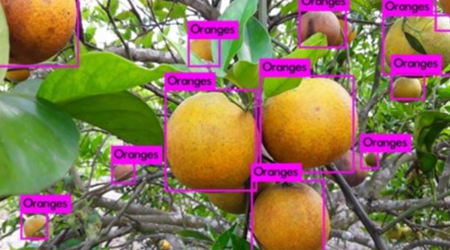Insights on AI in Agriculture and the Quality of Training Data
 By Anolytics | 05 February, 2022 in AI in Agriculture | 3 mins read
By Anolytics | 05 February, 2022 in AI in Agriculture | 3 mins read

Over the last decade, artificial intelligence (AI) and Machine Learning (ML) has been tested in a variety of industries as a way of development. However, it has only lately become obvious that AI may be used to improve agricultural decision-making. Farmers, in particular, may be able to make better judgments as a result of the application of AI technology, resulting in increased efficiency in agricultural and livestock production.
The agriculture sector’s desire to embrace AI technology for better decision-making is due to a number of variables. The undeniable growth in the amount of data accessible, as well as the simplicity with which it may be accessed, are at the forefront. This is made feasible by technological advancements in the field, such as more sensor use, faster access to satellite imagery, lower data logger prices, increasing drone use, and the use of deep learning technology in agriculture.
Despite this good trend, the agricultural industry now confronts a new problem in converting large amounts of data into high-quality datasets that farmers can utilize and that is useful to farms on a local and regional level.
Is Smart Farming a Long-Term Solution?
Soil is an important component of excellent yield since it is the source of the nutrients utilized to grow crops. Surveillance systems based on AI and machine learning in agriculture give insights to monitor crops, detect pests, and diagnose soil faults so that farmers may plant seeds at the optimal time for optimum yield.
All agricultural activities are threatened by weeds. The lower farm output, invading crops, suffocating pastures, and in rare circumstances, endangering cattle. AI sensors can detect weed-infested regions and determine the best herbicide to use in that location. Furthermore, by utilizing AI and computer vision, robots can reduce the number of herbicides sprayed on crops.
Many agricultural and agrotech businesses are attempting to improve agricultural efficiency with devices that utilize sensor fusion and AI models to find the ideal position for harvestable produce and assist in picking the best ones.
Rapid advancements in video analytics, fuelled by AI and ML algorithms, aid in the security of distant facilities, including fields and yields. For example, plant health may be monitored using a mix of infrared camera data from drones and sensors on the ground.
Future of AI in Agriculture
The emergence of the Internet of Things and AI are being aided by the rising number of active smartphone customers.
Agricultural AI is expected to increase considerably between 2021 and 2025. By 2025, it is anticipated to be worth $32.40 billion.
A huge increase in the global population is driving up demand for agricultural products. Maintaining demand-supply balance may be aided by advanced technology, intelligent types of machinery, and an effective data management system.
Artificial intelligence is in high demand in the agriculture sector as a result of this.
Also Read: How to Improve Computer Vision in AI for Precision Agriculture.
Significance of Training data in Agriculture Sector
Artificial intelligence in agriculture not only assists farmers in automating their agricultural operations but also changes to precision cultivation for improved crop output and quality while using fewer resources.
Businesses that enhance machine learning or AI – powered products or services, such as agricultural training data, unmanned aerial vehicles, and industrial robot manufacturing, will benefit from future technological advancements, which will aid the world in dealing with food production delays for a growing population.
Agriculture training datasets are created by Anolytics.ai and may be utilized in agricultural robotics, crop health and soil monitoring, field monitoring and a variety of other applications. Various annotation approaches, such as bounding boxes, polygon annotation, semantic segmentation, cuboid annotation, key points, and polylines, are used to address jobs of any complexity.
Conclusion
Due to growing investment in agricultural and IT infrastructures, the agriculture industry is gaining traction.
As AI improves each crop’s formula, it will speed up all the information that growers have always held. AI does, without a doubt, function following sustainable agricultural concepts. Being efficient with it might be the difference between a lucrative farm or agricultural enterprise and one that isn’t.
Addressing the gap in knowledge between farmers and future technologies is critical for increasing farmer incomes and ensuring the agricultural economy’s long-term viability.
please contact our expert.
Talk to an Expert →
You might be interested

- AI in Agriculture 27 Feb, 2020
How to Improve Computer Vision in AI for Precision Agriculture
Agriculture – the food generating sector is one of the leading occupations among the people in rural areas lacks due t
Read More →
- AI in Agriculture 12 Nov, 2020
The Usage of AI & ML in Agriculture with Image Annotation
Image Annotation Artificial Intelligence (AI) is getting integrated into vital fields making human life more efficient a
Read More →
- AI in Agriculture 16 May, 2023
How Robotics and AI Are Transforming the Agricultural Industry
In the agricultural industry, technological advancements have long been needed. In the face of a growing world populatio
Read More →